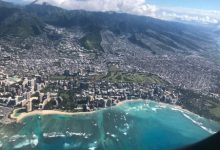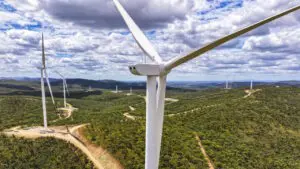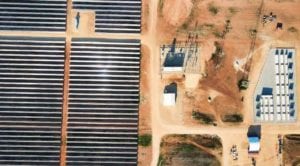In the first article of this series on Hawaii, we described some of the projects that have been built. This article looks at the three key drivers of renewable energy in the state; policy, economics and the need for resilience.
Policy
As mentioned in that article, the state has a goal of 100% renewables by 2045. This has been legislated as a Renewable Portfolio Standard (RPS) on Hawaiian utilities, where these businesses must source renewable energy as a percentage of their electricity sales.
There are interim targets of 30% by 2020, 40% by 2030, and 70% by 2040. Progress to date is illustrated in the following chart [1].
The utilities are obliged to run competitive tenders for energy procurement for projects greater than 5MW, not unlike the reverse auction processes that have been run in Australia.
Hawaii also has a similar energy efficiency portfolio standard that mandates a 4,300 GWh reduction in energy use through more efficient use of energy.
Maui has brought forward its own 100% goal by 10 years to 2035.
Previously, Hawaii had an effective Feed-In-Tariff known as Net Energy Metering (NEM) which paid PV owners for solar exports.
This has been superseded by newer schemes such as Customer Grid Supply (CGS) which had capped capacity limits to ensure that the grid could accommodate total solar exports, and CGS+ which enabled the grid operator to control solar exports and was also capped.
More recently, there has been the smart export for PV systems with storage, where only exports outside 9am to 4pm are compensated.
Economics
Relying upon the importation of fossil fuels, particularly diesel is an expensive way to supply an electricity network and Hawaiian’s have some of the most expensive rates for retail electricity in the USA at $0.34USD/kWh (~$0.48AUD/kWh).
This has motivated many households to install PV with roughly 18% of households installing solar, roughly half the installed PV capacity in the state.
Household solar systems produce electricity at a levelized cost far less than the retail tariff and as PV exports are now paid zero due to the high levels of solar exports during the day, solar and storage systems are economic.
Grid defection for households is a real possibility in the Hawaiian context due to high retail prices, the dependability of consistent solar production, and because the island climate does not always necessitate air-conditioning use.
New installations of wind, solar and renewable energy with energy storage are at prices lower than the consumption of oil or diesel through existing power plants, further accelerating the change to clean energy.
Prices for petrol are also higher than the mainland states of the US, making electric vehicles attractive, sooner. Also, given the limited geography, the perceived issue of “range anxiety” is less likely to be a problem in Hawaii.
Resilience
Much of the desire to use renewable energy across the islands is to reduce the reliance on the supply of imported fossil fuels (roughly 70% of its energy is supply) which are refined at Honolulu’s two refineries, an effective potential single point of failure in the event of a natural disaster or incident.
Hawaii is also one of the world’s most remote locations, in the middle of the Pacific Ocean making logistics challenging in the wake of a natural disaster.
As a result, Hawaiians value resilience in their energy system. The state has suffered a number of recent natural disasters that have severely impacted energy supply:
May 2018 – lower Puna eruption [1], Hawaii. Earthquake and lava flow with 700 homes destroyed and putting the 38MW Puna geothermal plant off-line to this day.
April 2018 – Kauai flood [2]. Where 1100mm of rain was recorded in the north of the island in a single day (a US record) with landslides cutting off the road from Hanalei which is still yet to be fully repaired.
September 1992 – Hurricane Iniki [3], Kauai, destroyed thousands of homes, killed six people and many residents were without power for months as much of the distribution and transmission network was destroyed by the hurricane.
arwick Forster is a director of Apogee Energy. This is part 2 of our 3-part series, and in part 3 we explain how a local Hawaiian business has embraced renewable energy to improve resilience and reduce costs. The first part can be found here.
[1]https://en.wikipedia.org/wiki/2018_lower_Puna_eruption
[2]https://en.wikipedia.org/wiki/2018_Hawaii_floods
[3]https://en.wikipedia.org/wiki/Hurricane_Iniki
[1]https://energy.hawaii.gov/wp-content/uploads/2018/06/HSEO_2018_EnergyFactsFigures.pdf











